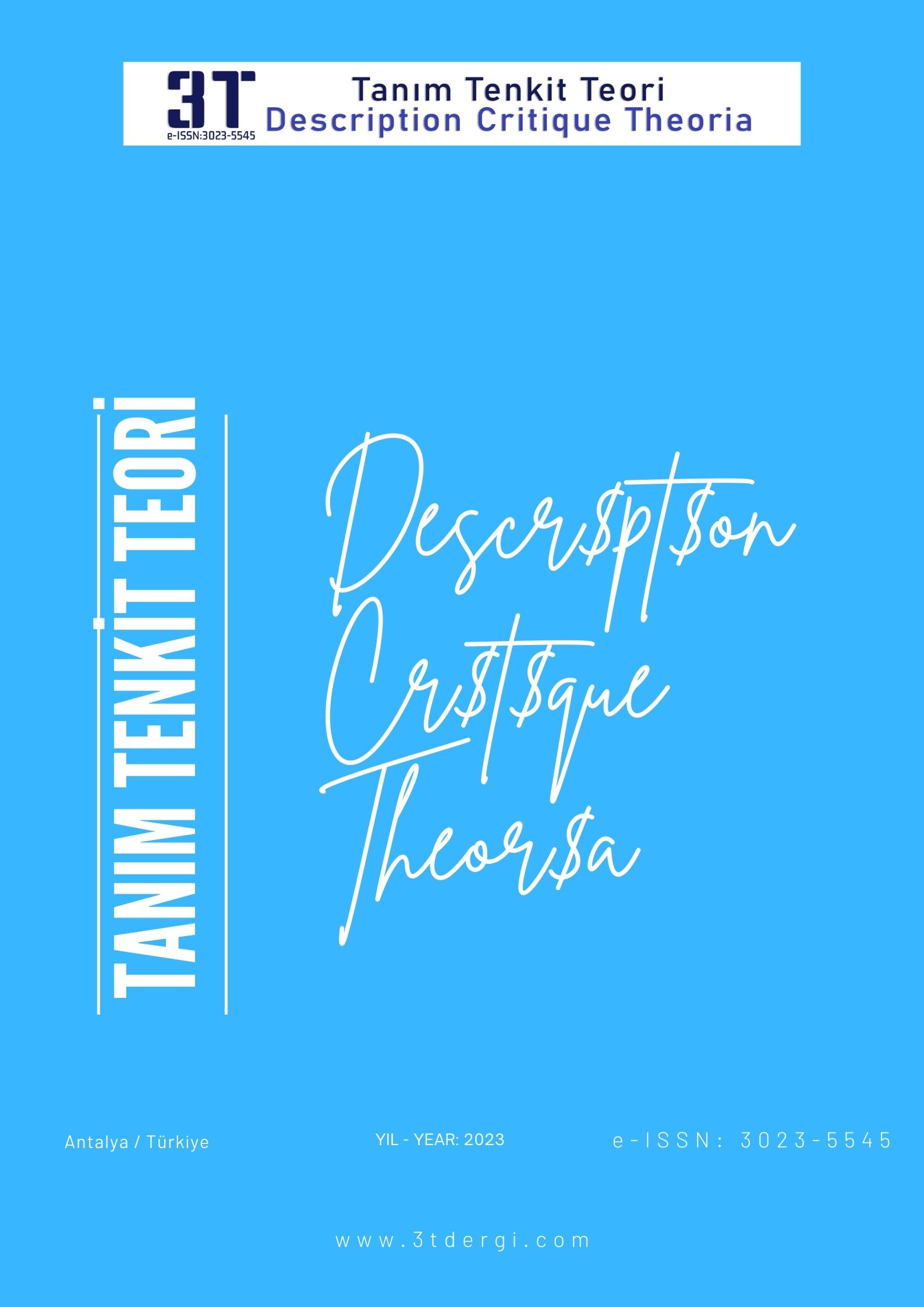Teaching the Names of Things to Hz Adam (a) in the Light of the Names of al-Alîm and al-Hakîm
DOI:
https://doi.org/10.5281/zenodo.10452659Keywords:
Tafsir, Ta‘lim al-Asma, Caliphate, Al-‘Alîm, Al-HakîmAbstract
Qur'an, after the verses explaining that Adam was appointed as the caliph, he mentions the event of ta‘lim al-asma. Ta‘lim al-asma is mean that all names were taught to Prophet Adam. Prophet Adam received this information directly from God. It is an occurrence that supposedly demonstrates Prophet Adam's supremacy. In actuality, this is a circumstance that demonstrates all of humanity's superiority in both person and standing in relation to Allah. Almighty God created man in a unique way, planted the seeds of different abilities in this human spirit, and has assigned him great duties and a great trust according to these abilities. Ta‘lim al-asma is an indicator and a reflection of this ability and duty. Since it lighten the first period of humanity, it is of great importance to examine this event from different perspectives. There is a close relationship between the content of the verse and the verses in the Qur'an. This relationship provides a better understanding of the Qur'an. Some verses in the Quran contain al-Asma’ al-Husna, often known as the names of God. The verse and names of God stated in the verse are connected in a significant network. Understanding the names of God is essential for comprehending the events and truths that exist in the cosmos since everything in the universe is a mirror of names of God. A greater knowledge of the Quran is made possible by this meaning relationship. Even though the Talim-i Esmâ phenomena has been the subject of numerous investigations, the connection between it and names of God has not received enough attention. In this study, this event has been tried to be clarified in line with the meanings of the names Al-‘Alîm (All knowing) and Al-Hakîm (The Perfectly Wise) in the verse (2:32) of the Qur’ān, in which the ta‘lim al-asma event is to be mentioned. Following the explanation of the fundamental components of this event, namely the creation of man, his caliphate, and Talîm-i Asma, these components were interpreted by viewing them through a perspective of knowledge and wisdom.
References
Alpaydın, M. A. (2016). “Âdem’e (a.s) Öğretilen İsimler”. Gaziosmanpaşa Üniversitesi İlahiyat Fakültesi Dergisi 4/2 (Aralık 2016), 123-138.
Atay, R. (2006). “Sunna”. The Qur’an: An Encyclopedia (Ed. Oliver Leaman). London and New York: Routledge.
Atay, R. (2009). “Din-Bilim İlişkisini Yeniden Düşünmek: Antony Flew’un Fikir Değiştirmesi Üzerine.” Harran Ü. İlahiyat Fak. Dergisi Yıl 14, S. 21, 65-87.
Atay, R. (2013). “Din Dili Çerçevesinde Süleyman Çelebi’nin Mevlid’inde Tanrı Kavramının Serüveni.” Marmara Ü. İlahiyat Fak. Dergisi S. 44 (2013/1) 291-322.
Atay, R. - Gürsu, O. (2018). “Eş’ari Düşüncesinde Özgür İradenin İmkânı”. V. Uluslararası Şeyh Şaban-ı Velî Sempozyumu (Eş’arîlik)Bildirileri (Ed. Mustafa Aykaç vd.). Kastamonu: Kastamonu Üniversitesi Matbaası.
Atay, R. (2019). “Bilmeme Hakkı: Dijital Çağda Epistemik Korunma Ve/Ya Arınma Üzerine.” II. Uluslararası Türk Halklarının Felsefi Mirası Sempozyumu Bildirileri Tam Metin Kitabı (Ed. Hamza Yakar ve Cemalettin İpek). Kırşehir, 349-364.
Atay, R. - Güven, B. (2021), Daimî Varoluşsal Kaygı: İsmet Özel Şiiri Örneği/Permanent Existential Anxiety: The Case of Ismet Özel Poetry. Turkish Academic Research Review, 6 (5), 1517-1544
Ateş, S. (2012). Kur'ân'ın Çağdaş Tefsiri, İstanbul: Yeni Ufuklar Neşriyat.
Ayhan, H., Kazıcı, Z. (1998). “Talim ve Terbiye”, DİA, 39/515-523, İstanbul: TDV yayınları.
Bayraklı, B. (2001). Yeni Bir Anlayışın Işığında Kur'an Tefsiri, İstanbul: Bayraklı Yayınları.
Beyzâvî, A. (2015), Envâru’t-Tenzîl ve Esrâru’t-Te’vîl, Beyrut: Dâru‟l-Kütübi‟l-İlmiyye.
Buhârî, M. (2004), Sahîhi’l-Buhârî, (tertib:Muhammed Fuad Abdülbâkî, tah. Ahmed Muhammed Sakir), Kahire: Dâru İbn-i Heysem.
Cevherî, İ. (1999), es-Sıhah Tâcu’l-Luğa ve Sıhahu’l-Arabiyye, Beyrut: Dâru‟l-Âlem.
Ebû Hayyân,Y. (2002). el-Bahru’l-Muhît, Beyrût: Dâru’l-Kütübi’l-İlmiyye.
Ebûsuûd, M. (ty.). İrşâd-u Aklı Selîm, Beyrut: Daru’lTurasü’l-Arabiyye.
Erdem, M. (2015). Hazreti Âdem, Ankara: Türkiye Diyanet Vakfı Yayınları.
Ezherî, A. (1976). Tehzîbu’l-Luğa, Beyrut: Dâru‟l Mısriyye.
Isfahanî, Râğıb. (ty.). el-Müfredât fî Garibi’l-Kur'ân, Beyrut: Dâru’l Ma’rife.
İbn Atiyye. (2001). el-Muĥarrerü’l-Vecîz, Beyrût: Daru’l- Kütübü’l-İlmiyye.
İbn Fâris, A. (1991). Mu’cemu Mekâyisi’l-Lüğa, Beyrut: B.y.
İbn Kesîr, İ. (2000). Tefsîru’l-Kur’âni’l-Azîm, Beyrut: Mektebetu’t Evladu’ş-şeyh litturas.
Kahraman, F. (2020). “Hazreti Âdem’e Öğretilen İsimler: İnsanoğlunun Gerçek Mahiyetinin Tezahürü”. Balıkesir İlahiyat Dergisi 11 (Haziran 2020), 39-63.
Kazıcı, Z. (1998). “Talim ve Terbiye”, DİA, 39/515-523, İstanbul: TDV yayınları.
Kırca, Celal. (1996) Kur'ân ve İnsan, İstanbul: Marifet Yayınları.
Kurtubî, A. (2006). el-Câmi’ li Ahkâmi’l-Kur'ân, Beyrut: Müessetur-risaleh.
Kuşeyrî, A. (2007), Letâʾifü’l-işârât, Beyrut: Daru’l- Kütübü’l-İlmiyye.
Kutup, S. (1972) Fîzılâl-il Kur’ân, çev. M. Emin Saraç, İ. Hakkı Şengüler, Hikmet Yayınevi, İstanbul.
Küçük, A. (2007). Kur’ân’da Toplumsal Sınanma, İstanbul: Beyan Yayınları.
Maturîdî, M. (2005), Teʾvîlâtü’l-Ḳurʾân, Beyrût: Daru’l-Mektebet-ül-ilmiyye.
Merâğî, A. (2015). Tefsîrü’l-Merâğî, Beyrut: Daru’l-Mektebet-ül-İlmiyye.
Mevdûdî, Ebû’l-‘Alâ (1986). Tefhîmu’l-Kur’ân, terc. M. Han Kayânî, Y. Karaca ve diğerleri, İstanbul.
Nursi, Said. (2006), Sözler, İstanbul: Rnk yayınları.
Nursi, Said. (2010), Lem’alar, İstanbul: Rnk yayınları.
Nursi, Said. (2006), İşarat-ül i’caz, İstanbul: Rnk yayınları.
Râzî, F. (2004) Mefâtihu’l-Gayb, Beyrût: Daru’l-Mektebet-ül-ilmiyye.
Râzî, F. (1992), el-Mahsûl fî İ lmi Usûli‟l-Fıkh, Beyrût: by.
Sezer, İ. (2001) “Dillerin farklılığı ve Âdemceyi çözebilirmiyiz”, Kur’ân ve dil sempozyumu.
Süyûtî, C.(1993). ed-Dürru’l-Mensûr, Beyrût: by.
Şimşek, S. (2012). Hayat kaynağı Kur’ân tefsiri, İstanbul: Beyan yayınları.
Şahin, M. (2020). Etvâr-ı Seb’a Geleneği ve Vâhib Ümmî’de Etvâr-ı Seb’a, Turkish Studies Comparative Religious Studies, 15/1, s.77-96.
Tabâtabâî, H. (1973). e l-Mîzân fî Tefsîri’l-Kur’ân.
Taberî, C. (t.y.). Câmiu’l-Beyân an te’vîli Âyi’l- Kur’ân, Kahire: Daru’l-Hicr.
Tirmîzî, S. (2002), Sünen-i Tirmîzî, Beyrut: Dâru’l-Ma’rife.
Yazır, H. (1998). Hak Dini Kur’an Dili, Eser, İstanbul.
Yıldırım, C. (2001). İlmin Işığında Asrın Kur’ân Tefsiri, İstanbul: Anadolu yayınları.
Yılmaz, S. (1992). Kur’ân Işığında Yaratılış Konuları, Ankara: Diyanet İşleri Başkanlığı Yayınları.
Zemahşerî, M. (1998). el-Keşşâf an Hakâiki Gavâmidi’t-Tenzîl ve Uyûni’l-Ekâvîl fî Vücûhi’t-Te’vîl, Riyad.
Zuhaylî, V. (2005). Tefsir-ul Münîr, Beyrût: Daru’l-Fikr.
Downloads
Published
How to Cite
Issue
Section
License
Copyright (c) 2023 Tanım Tenkit Teori

This work is licensed under a Creative Commons Attribution-NonCommercial 4.0 International License.


